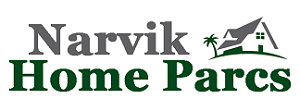Which cost factors should you prioritise when planning your ADU?

When planning an accessory dwelling unit (ADU), strategic prioritisation of expenses can make the difference between a successful project and a budget nightmare. As you develop your plans, it’s essential to recognise the various factors that affect ADU pricing to allocate your resources wisely and avoid costly surprises during the construction process. Some cost factors matter more than others and deserve your attention early in the planning process.
Start with site preparation
The condition of your property should be your priority when budgeting for an ADU. This is the foundation upon which everything else depends and where surprises can be most costly. Poor soil quality, steep slopes, or drainage issues can add substantial costs that cannot be avoided once construction begins. A professional site assessment costing $1,500-$3,000 upfront can prevent tens of thousands in unexpected expenses later. If your property requires retaining walls, extensive grading, or soil remediation, these costs must be factored into your initial budget before considering any design elements. Foundation work typically consumes 10-15% of your total budget, but this percentage can double with challenging site conditions. Prioritise thorough site evaluation and realistic budgeting for these foundational elements before focusing on the more exciting aspects of your ADU design.
Focus on hidden systems
After addressing site conditions, prioritise your core infrastructure systems. These hidden elements determine your ADU’s long-term functionality and are incredibly costly to modify after construction. Focus your attention and budget on:
- Electrical capacity – Ensure your panel and service can handle the additional load
- Plumbing systems – Properly sized water lines and waste removal
- HVAC planning – Efficient heating and cooling are sized appropriately
- Insulation quality – Energy efficiency that saves money long-term
- Structural integrity – Quality framing and roof systems
These systems typically represent 40-60% of your budget and should be prioritised over aesthetic choices. While granite countertops can always be added later, rewiring or replumbing after construction is prohibitively expensive and disruptive.
Budget for permit costs
Permitting expenses factors that affect ADU pricing should be prioritised early in your planning process, as they vary dramatically between jurisdictions and can affect your overall budget significantly. Some municipalities charge minimal fees while others may require $15,000-$25,000 for the same-sized unit. Research these costs thoroughly before committing to your project. Consider hiring a consultant familiar with local regulations to help navigate the process, as this investment can prevent costly delays and redesigns. Prioritise compliance with local codes, even if it means simplifying other aspects of your design. Impact fees and utility connection charges should be researched and budgeted early, as these non-negotiable expenses often surprise homeowners who focus solely on construction costs.
Choose simplicity over complexity
When designing your ADU, prioritise efficient use of space over elaborate layouts. Simple rectangular designs with stacked plumbing (bathrooms above or adjacent to each other) cost substantially less than complex shapes with scattered wet areas. Consider these cost-saving priorities:
- Standard-sized doors and windows instead of custom options
- Straight walls rather than curves or numerous corners
- Clustered plumbing fixtures to minimise pipe runs
- Efficient roof designs without multiple complex angles
- Open layouts that reduce the need for interior walls
A straightforward 650-square-foot ADU with efficient design might cost less than a 500-square-foot unit with complex architectural features. Prioritise design elements factors that affect ADU pricing that maximise livable space while minimising construction complexity.
By prioritising site conditions, infrastructure, regulatory requirements, efficient design, and durability before cosmetic considerations, you create a solid foundation for your ADU project that addresses the most critical factors first. This prioritisation ensures your budget flows to elements that would be most expensive to change later, maximising the long-term value of your accessory dwelling unit.

